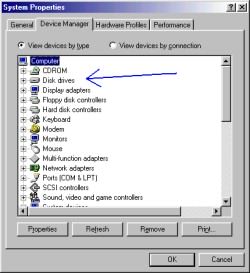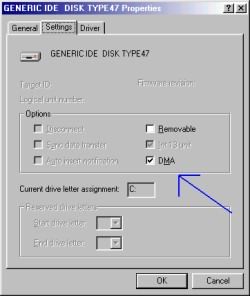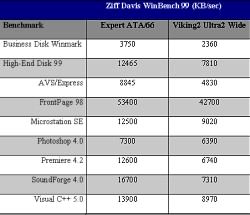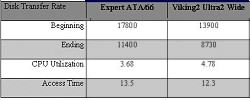| Western Digital Expert
by John Reynolds |
||||
|
One last thing concerning the Expert's installation is enabling the IDE bus mastering drivers for the drive itself. This is something that I've seen online a number of times as a point of confusion, and can be easily forgotten or overlooked even by those in the know. But why should you concern yourself with doing so? Well, older modes of transferring data across an IDE interface required the system's processor to handle these transfers, consumming precious CPU cycles that could instead be used for pumping vertices to your 3D card or AI routines to your virtual enemies. In recent years, however, DMA (Dynamic Memory Access) modes have become the industry standard, allowing for installed devices to tranfer information to and from memory without your processor's intervention. A long-time selling point for SCSI devices, low CPU utilization is also now enjoyed by drives such as the Expert. Enabling the DMA, or IDE bus mastering, on the Expert drive is very simple. Start by right-clicking on the My Computer icon on your desktop. Choosing Properties at the bottom of the menu by left-clicking will give you the Systems Properties window. Click on the Device Manager tab at the top of the window and it should change to something very similar to this:
 Now click on the box to the left of Disk Drives and you will then see a listing of all drives, hard or floppy, installed in your system. Double-click on the Expert, most likely listed as a Generic IDE Disk, and then choose the Settings tab along the top. You will now see the window below. In the bottom-right of the Options section is a checkbox for DMA. Click once so that a checkmark appears in this box, then click OK at the bottom until you close all windows and return to your desktop. At this point you'll be prompted to reboot your system. Go ahead and reboot.
 |
Performance But now that this latest piece in IDE hard drive technology is installed, how does it stack up performance-wise? I've been running SCSI-only in my personal system at home for years now, and to be honest I wasn't expecting an IDE drive to outperform to my Viking 2 hard drive. A respectable SCSI drive, the Viking2 goes for around $250 in 4.5gb sizes these days, while the 9gb Expert can be found for under $200, not to mention the added cost of a SCSI controller. And I decided to include benchmarks from the Viking2 to show just how far IDE technology has come in recent years. WinBench 99 (v1.1) and Adaptec's Threadmark (v2.0) were used to benchmark the drive, which was given a single, FAT 32 partition, each test being performed three times with the final scores being the average of these results. The test system, generously loaned to me by my friend, Frank Raynor, consisted of the following:
So where did those ATA/66 scores come from? Well, COMBATSIM.COM™ has managed to obtain Promise's new IDE RAID controller card, the Fast Trak66, and since it supports ATA/66 I decided to re-enable the Expert drive's ATA/66 mode and see what the future might have in store. From the benchmarks, it would appear that current ATA/33 controllers won't be holding drives such as the Expert back that much, since running on the Promise card didn't give a truly noteworthy performance boost, though under WinBench it certainly left the Viking 2 drive well behind in either mode. Go to Page Three: Summary
|
|||
|
Copyright © 1997 - 2000 COMBATSIM.COM, INC. All Rights Reserved. Last Updated June 30th, 1999 |
||||


